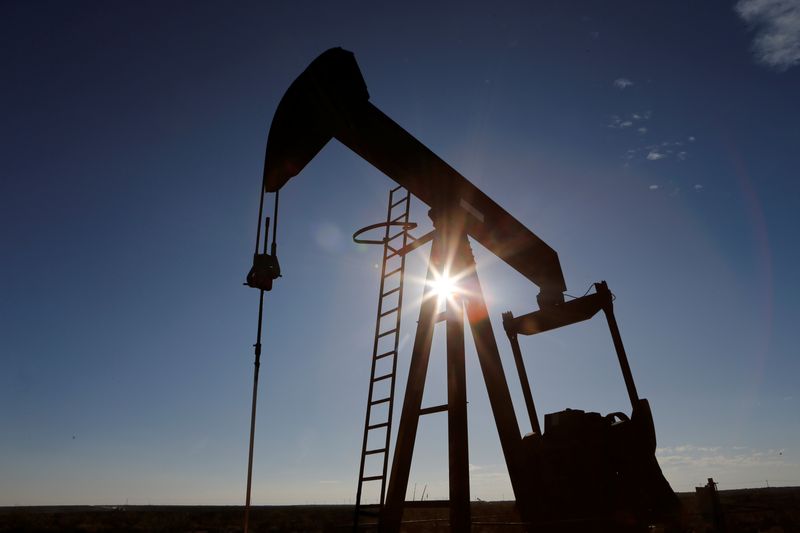By Ahmad Ghaddar
LONDON (Reuters) -Oil prices grazed a four-week high on Wednesday on expectations that major producers will extend output cuts at a meeting on Sunday and that fuel consumption will start rising as the peak summer demand season kicks off.
futures were up 19 cents, or 0.2%, at $84.41 a barrel at 1335 GMT, after touching the highest since May 1 at $85.02.
U.S. West Texas Intermediate futures were up 34 cents, or 0.4%, to $80.17, after also hitting the highest since May 1 at $80.62.
Both benchmarks gained more than 1% on Tuesday.
Traders and analysts expect the OPEC+ group, comprising the Organization of the Petroleum Exporting Countries (OPEC) and allies including Russia, to keep voluntary production cuts of about 2.2 million barrels per day (bpd) in place.
“We see no appetite at this juncture to add more barrels to the market and trigger another price move to the downside,” said RBC Capital analyst Helima Croft.
“The current price level is already causing several producers to take on additional debt and push out timelines for some high-profile projects.”
The onset of the northern hemisphere summer season, when demand for road and aviation fuels peaks, was also supporting prices.
“Initial data suggest a relatively high number of U.S. holiday trips have been taken over the Memorial Day holiday, the traditional start of the driving season. Air travel has also been strong,” ANZ commodities strategist Daniel Hynes said in a note.
Investors were awaiting inventory data from the American Petroleum Institute later in the day. The release was pushed back by a day because of Memorial Day on Monday.
U.S. crude oil stockpiles are expected to have fallen by about 1.9 million barrels last week, a preliminary Reuters poll showed on Tuesday.
Investors are also awaiting Friday’s U.S. core personal consumption expenditures (PCE) price index report for April due on Friday.

The Federal Reserve’s preferred inflation barometer is expected to hold steady on a monthly basis, which could sway expectations for interest rate cuts and affect oil prices.
Expectations for the timing of rate cuts have see-sawed, with policymakers wary of sticky inflation.

